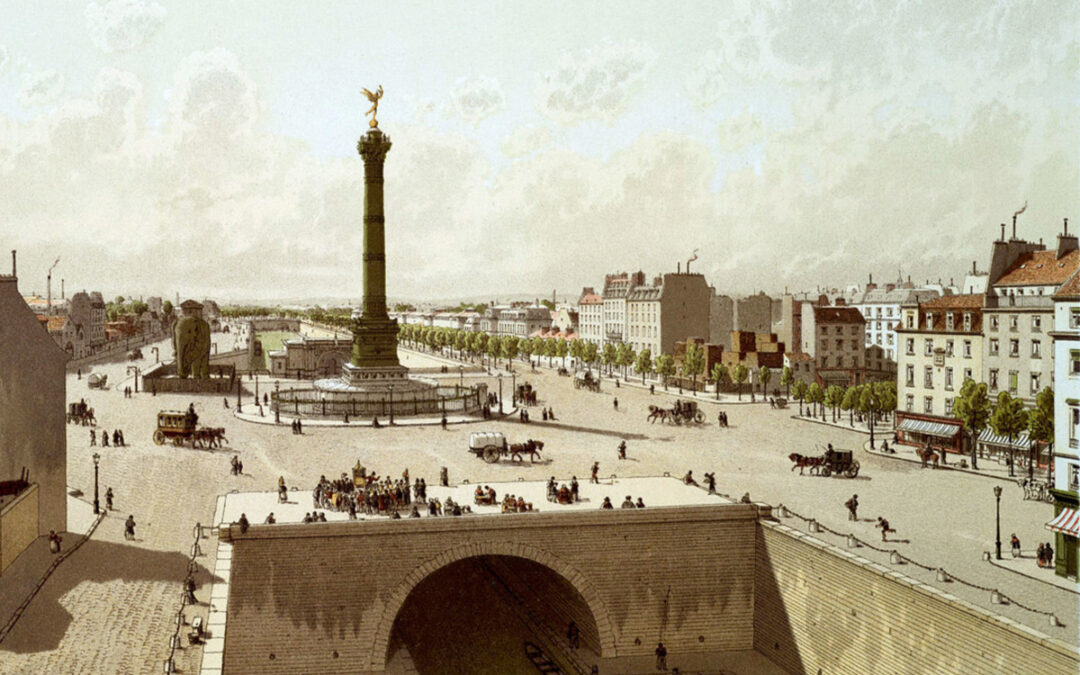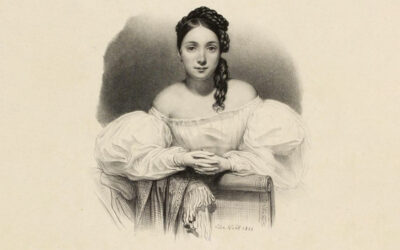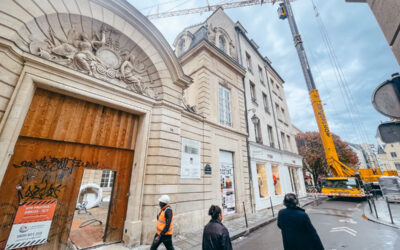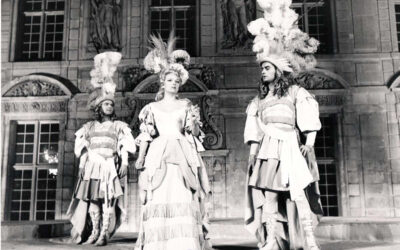Place de la Bastille, Theodor Josef Hubert Hoffbauer, 1841
The storming of the Bastille is one of the major events in our history. It is the starting point of a total and new “Revolution” which, let us remember, gave birth to our very first “French Republic”.
The Parisians who set out on July 14, 1789, and who, from the Marais, walked up Rue Saint-Antoine towards the old medieval fortress had in mind to enter, willingly or by force, into the building in order to obtain weapons. The Bastille, arsenal and prison, is also a source of fantasies: in addition to recovering rifles, powder and cannons, the revolutionaries hope to free the “numerous” prisoners who are there, due to “royal arbitrariness”.
However, when the Bastille was taken, it was a disappointment: only seven people were discovered in the castle's jails: four crooks and forgers, a nobleman convicted of debauchery, and two madmen who, almost immediately, are locked up again, this time in Charenton... The catch is meager, but ultimately the act is strong; it will be even more so later, embellished by revolutionary imagery.
The next day, the demolition of the fortress begins and as, even in these times of abolition of privileges, there are no small profits, it is a private entrepreneur who is responsible for the destruction: Mr. Palloy will resell , with profits, the stones of the building, but also several “souvenirs” recovered from the building.
The destruction project will last two years: in May 1791, the disturbing silhouette of the Bastille definitively disappeared, after having dominated the Parisian skyline for more than four centuries.

The Storming of the Bastille, Jean-Pierre Houël, 1789

It all began in 1370, during the reign of Charles V, in the middle of the Hundred Years' War. In order to protect Paris from the English, the king decided to build a new surrounding wall, punctuated by several bastions, including one, more massive and more important than the others: the Bastille ("bastille" derives from "bastir / build", which also gives “bastide” in Provençal and “bastillon / bastion” in French). This “Bastille”, a fortified gate in truth, is the keystone of the system imagined by Charles V: it closes Paris to the east (to the west, the Louvre has the same function) and controls access to the capital from the suburbs.
It also ensured the security of the king and his court: Charles V then resided in the Marais, in his new “Hotel Saint-Pol” and from there went to the countryside, to the Château de Vincennes. The Bastille then covers a fairly small area (68m x 37m, to the west of the current square, on the "Marais" side) but its massive appearance impresses, with its eight towers and its keep culminating at 24 meters.
Only the king can cross the building to leave Paris. The people are asked to make a detour, through a secondary gate, pierced in the wall to the north of the fortress. The Bastille is then an access barrier, defensive work, royal residence, barracks and arsenal.
It was in the XNUMXth century that it officially became a prison. The first jails were set up in the building. Its footprint also extends, with the addition to the east of a triangular bastion, today at the height of the July Column.
In the following century, Richelieu made the citadel a “state” prison, in order to lock up “enemies of the Crown”. This is the beginning of “letters de cachet” and prisoners “imprisoned” without trial, which pamphlets and libels will soon denounce.
During the “Age of Enlightenment” criticism increased both regarding arbitrary imprisonment and the very aesthetics of the building. At a time when, in the private mansions of the Marais, "classicism" vies with "rockery", the old medieval fortress stands out, annoys, disgusts, to the point that, under Louis XVI, its demolition was already being considered.
But it was only with the Revolution that the destruction was effective. In a few months, the Bastille was razed. Instead, a vast field of ruins will remain until the 19th century.
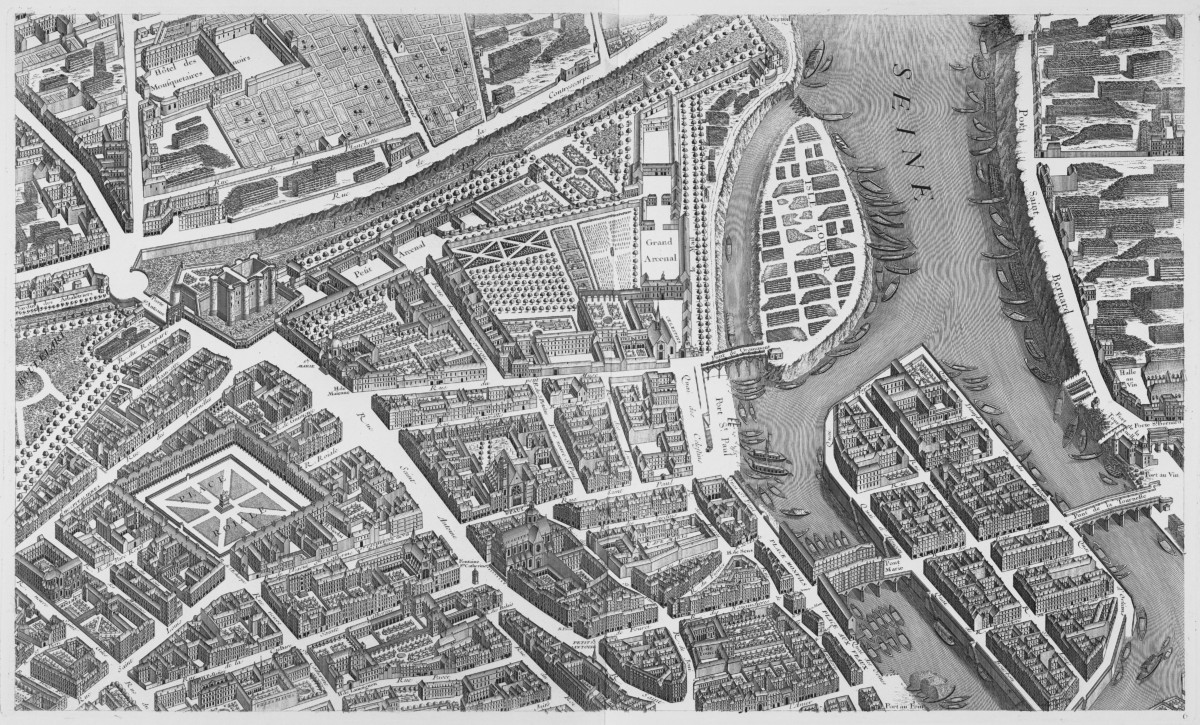
Plan of Turgot, 1739
It was Napoleon I who initiated the first redevelopment projects. On this immense, useless and chaotic esplanade, the Emperor notably gave his approval for the construction of an immense fountain, 12 meters high, in the shape of an elephant! A full-size model is built; it will remain in place until 1830, attracting curious people, walkers and tourists and, for the anecdote, will also serve as a refuge for Gavroche in Les Misérables.
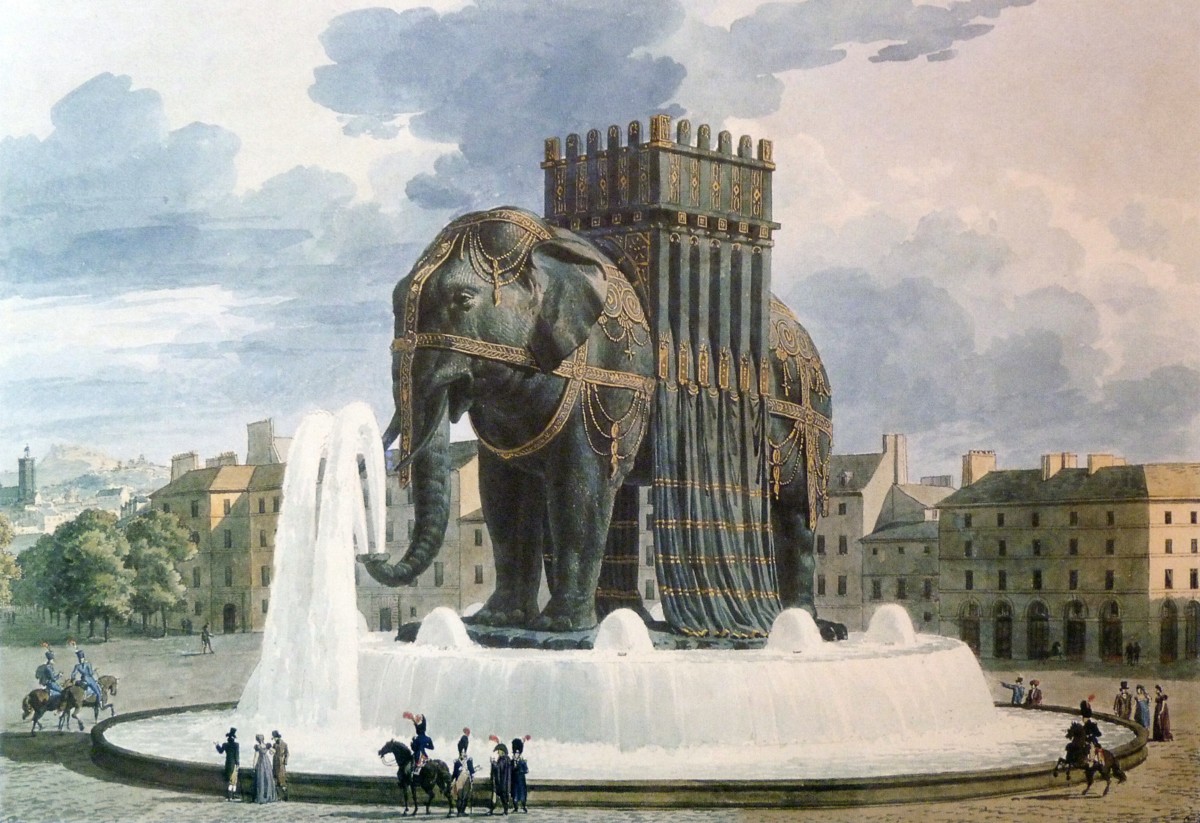
Last project of the elephant fountain for the Place de la Bastille, JA Alavoine, 19th century
But it is especially with Louis-Philippe that the place takes on its current appearance. In order to celebrate the deaths of the Revolution of 1830, the king ordered the erection of a commemorative column, crowned with a “Genius of Liberty”. This “July Column”, first planned in marble, was finally made in bronze. On its shaft are engraved the names of the 504 victims who fell during the “Trois Glorieuses” (July 27, 28, 29, 1830), this other “revolution” which put an end to the reign of Charles X.
From then on, the square became the new “fashionable place” at the eastern tip of the Marais. Buildings were built on its perimeter, performance halls as well (like the “National Arenas”, an open-air hall built under the Second Empire), and even a train station, in 1859! This is built on the site of the current Opéra-Bastille. The “green corridor” and the “viaduc des Arts” in the 12th arrondissement are today the last testimonies.
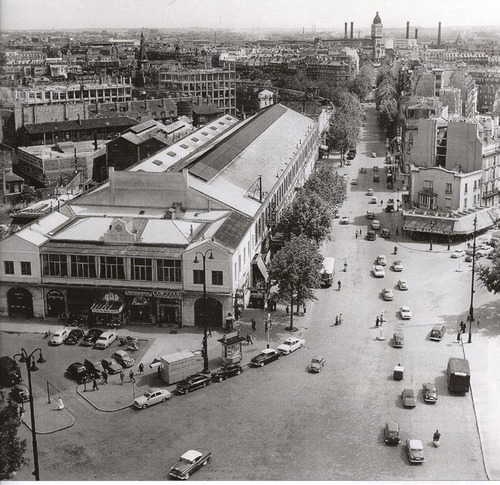
Bastille station open from 1859 to 1969
❁
Among all the “notable” prisoners, more or less real enemies of the crown, whether by their actions, their religion, their relationships, their writings, their conduct, we can cite for example Fouquet, Voltaire, Beaumarchais or Sade only one still remains mysterious to this day: the famous Iron Mask.
Apparently died in the Bastille at the beginning of the 18th century, the man was never really identified and even today his story lends itself to all hypotheses and fantasies. In his time, his detention also considerably fueled criticism against the monarchy, its arbitrariness and its absolutism.
It also abundantly nourished the dark legend of the Bastille to the point that, well after the events of July 1789, chroniclers spread the rumor that the revolutionaries, exploring the depths of the prison, had discovered in an oubliée the skeleton of the man still wearing his metal mask...
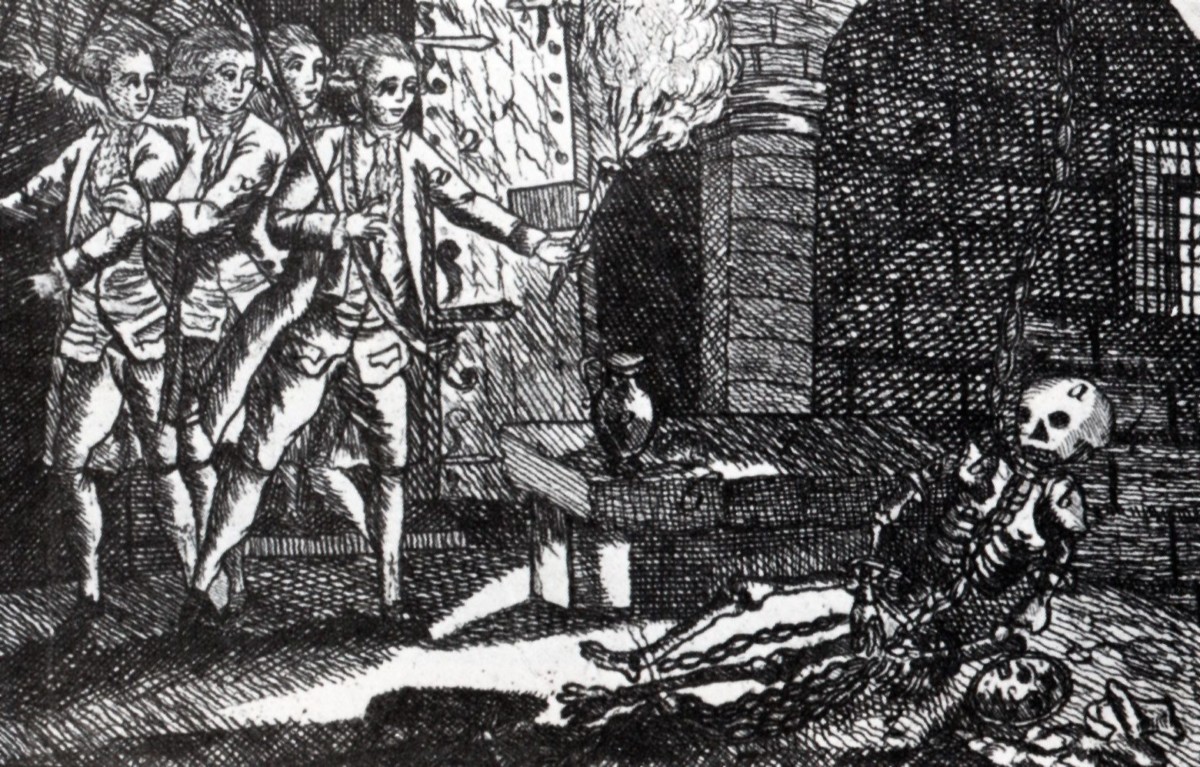
Skeleton discovered from the iron mask of the Bastille on July 22, 1789
FOR PASSIONATES OFUS
Juliette Drouet actress, muse and mistress of Victor Hugo
At 14 rue Sainte-Anastase, from 1836 to 45 and at 12 from 1845 to 48, a few hundred meters from Place des Vosges, lived the muse and lover of Victor Hugo, Juliette Drouet née Julienne Gauvain.
Rue Vieille-du-Temple: the fabulous construction site restarts
A luxury hotel will be created at the end of the work. On the ground floor, the old stables and carriage houses will house the restaurant on the large courtyard, while the first courtyard, on rue Vieille-du-Temple, will feature two businesses continuing its 19th century layout.
The Marais festival, a fabulous story
The Festival du Marais dates back to a time that those under 60 cannot know. However, this leading artistic event was for a long time one of the most popular cultural events in the capital. For a quarter of a century, from 1962 to 1987, this unique festival…
NOW ON THE MOOD MARSH
The best tattoo parlors in Marais
Tattooing, an age-old practice, has long been the prerogative of convicts, dock workers, the underworld and sailors. Although it has become democratized, now affecting all profiles and concerning one in five French people, including 16% women compared to 10% men, it still remains taboo due to its definitive and transgressive nature.
Juliette Drouet actress, muse and mistress of Victor Hugo
At 14 rue Sainte-Anastase, from 1836 to 45 and at 12 from 1845 to 48, a few hundred meters from Place des Vosges, lived the muse and lover of Victor Hugo, Juliette Drouet née Julienne Gauvain.
Piccola Mia, the pizzas of the Republic
On the Place de la République, a brasserie with Italian accents has just opened, which quickly made people forget the old Pizza Pino. Welcome to Piccola Mia, the fruit of the joyful encounter between Italian chef Denny Imbroisi, pizza chef Julien Serri and mixologist Matthias Giroud who creates a creative cocktail menu.

